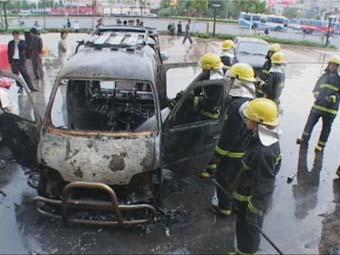Nitrogen hazards related cases
Delaware Varelo refinery two workers into the limited space of the death case, let us meet the dangers of nitrogen.
The CSB conducted a detailed analysis of the incident and issued a safety bulletin. The accident occurred at a facility that processes 180,000 truckloads of crude oil a day. Contractor workers were installing a pipe. The tank below the worker's position had just been purged with nitrogen, and the metal column at the top of the tank entrance had been wrapped with a "no entry" tape and a warning sign warning of "danger" and no entry without permission. But it doesn't address the nitrogen danger. The maintenance work ticket also failed to disclose the presence of nitrogen, and the operator found a roll of tape 5 feet from the bottom of the tank while cleaning the tank mouth. The tape had to be removed before the installation of the pipe work. They can choose to let the limited space of the professional team to clean up the tape, but the process will take several hours, and time is running out for them in bend, in order to avoid delay time, very close to an operator left the mouth, try to use a wire belt hook up, but without success. A worker was sitting on the edge of the boot with his legs stuck into the canister, but he still couldn't get the tape out. At this point, there are two possible accidents. The operator, under the supervision of someone nearby, tries to get into the tank quickly, pick up the tape and get out. Or fall into the tank due to the high concentration of nitrogen in the tank and suddenly become dizzy and unconscious. Upon seeing this, guards outside immediately raised a ladder and entered the tank to help the man who had fainted. To add insult to injury, he too collapsed without an air ventilator. Other personnel on the scene immediately pressed the emergency button and reported the situation on their walkie-talkies. When rescuers arrived, they found a hand-held tester in the hands of the fainted worker showed oxygen levels of less than 1%. Professional rescuers put on air breathing apparatus and set up hinges to enter the tank for rescue, but it was already 10 minutes before the two workers died in the end. The accident occurred because the employee believed that he could quickly enter the tank, remove the tape and leave quickly. American security experts say this is a mistake. Holding your breath and going in and out quickly is a very unreliable thing to do, because holding your breath isn't long enough to do it. Inhaling high levels of nitrogen at the entrance to a confined space can also cause a faint due to lack of oxygen. In particular, after colleagues in distress, others will be very anxious to rescue, even what PPE equipment does not wear, directly into the dead. This is not a matter of judgement on the part of the staff, it is a matter of training. If the staff had been properly trained and rehearsed, this would not have happened.
Accident of Nitrogen gas
This case shows that when hypoxic air is inhaled close to an opening in a confined space, it affects judgment and coordination, and people eventually fall, pass out, or fail to find an exit and die. From the accident, it can be seen that entering the confined space hastily and other workers entering the tank without protective measures reflect a lack of awareness of the hazards of nitrogen gas. Otherwise, this tragic accident could have been completely avoided.





 Facebook
Facebook YouTube
YouTube LinkedIn
LinkedIn Twitter
Twitter